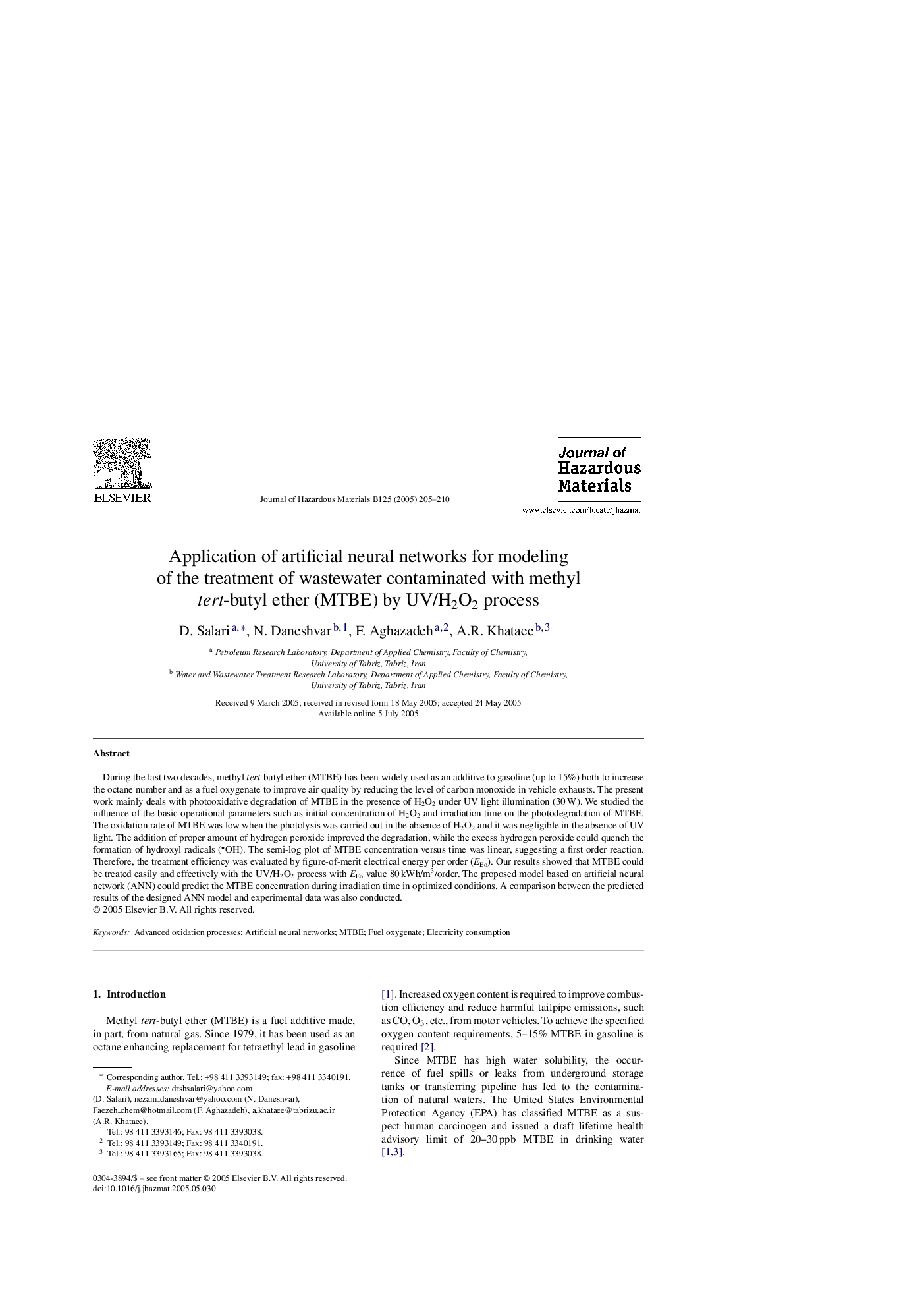| Article ID | Journal | Published Year | Pages | File Type |
|---|---|---|---|---|
| 9674137 | Journal of Hazardous Materials | 2005 | 6 Pages |
Abstract
During the last two decades, methyl tert-butyl ether (MTBE) has been widely used as an additive to gasoline (up to 15%) both to increase the octane number and as a fuel oxygenate to improve air quality by reducing the level of carbon monoxide in vehicle exhausts. The present work mainly deals with photooxidative degradation of MTBE in the presence of H2O2 under UV light illumination (30Â W). We studied the influence of the basic operational parameters such as initial concentration of H2O2 and irradiation time on the photodegradation of MTBE. The oxidation rate of MTBE was low when the photolysis was carried out in the absence of H2O2 and it was negligible in the absence of UV light. The addition of proper amount of hydrogen peroxide improved the degradation, while the excess hydrogen peroxide could quench the formation of hydroxyl radicals (OH). The semi-log plot of MTBE concentration versus time was linear, suggesting a first order reaction. Therefore, the treatment efficiency was evaluated by figure-of-merit electrical energy per order (EEo). Our results showed that MTBE could be treated easily and effectively with the UV/H2O2 process with EEo value 80Â kWh/m3/order. The proposed model based on artificial neural network (ANN) could predict the MTBE concentration during irradiation time in optimized conditions. A comparison between the predicted results of the designed ANN model and experimental data was also conducted.
Keywords
Related Topics
Physical Sciences and Engineering
Chemical Engineering
Chemical Health and Safety
Authors
D. Salari, N. Daneshvar, F. Aghazadeh, A.R. Khataee,
